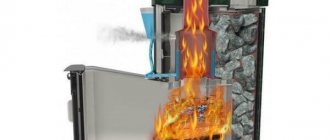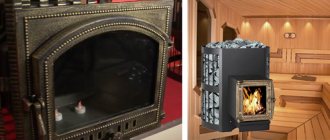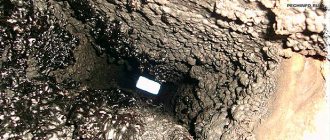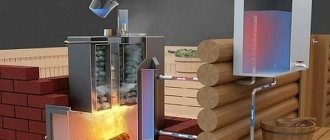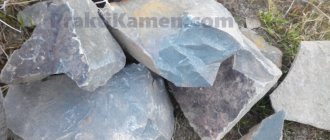Every country has something unique and Georgia is no exception. In addition to stunning natural and urban landscapes, as well as a large number of historical monuments, there are the sulfur baths of Tbilisi - a special place, famous far beyond the borders of Georgia. One of the main attractions for travelers, where Georgians themselves like to relax.
What is hidden in the legend of the sulfur baths?
Like any attraction whose creation goes back centuries, the sulfur baths are associated with a beautiful legend. It is believed that this place, delightful and unusual in its natural characteristics, was once discovered by the ruler, Vakhtang Gorgasali. They say that the king discovered the place where the sulfur baths would later be located in Tbilisi, completely by accident. While hunting, he released his falcon. He chased the pheasant, but scratched it and dropped it into hot sulfur water, where it boiled. According to another version (and there are several of them), the deer, which was wounded by the king, drank water from warm springs and miraculously recovered.
From that moment on, the ruler decided not only to remember the place where the warm springs were located, but also to found a city here, called Tbilisi. Later he opened the famous baths here. By the way, not far from the entrance to this complex, behind the picturesque park named after G. Aliyev, there is a monument in the form of a falcon holding a pheasant carcass in its claws.
Short story
Legend says that once upon a time the founder, King Vakhtang Gorgasali (founder of Tbilisi), hunted in these lands along with his falcon.
They hit a pheasant, which fell down like a stone. When the nobleman found the carcass, he discovered that it had been boiled in a thermal spring, and a falcon was sitting on top of it. The king liked the place so much that he ordered the construction of baths on this site .
It is not known how true this story is, but one thing is certain - hot hydrogen sulfide springs were one of the main reasons for choosing the site for the construction of Tbilisi. This is evidenced by the name of the city, which comes from the word “tbili” (warm).
The first baths appeared here in the 1st-2nd centuries, and the current complexes were built in the period from the 17th to the 19th centuries. A separate layer of urban culture formed around them. As in ancient Rome and the countries of the East, they served not only for washing and healing, but also as original clubs. They gathered there to exchange news, feast, make deals and just relax.
A beautiful legend: truth or fiction?
However, as it turned out, this is just a beautiful legend that local residents present to tourists with special pride. The myth was dispelled by archaeological excavations recently carried out in the capital of Georgia. According to these studies, the city itself existed even before the birth of Vakhtang Gorgasali. Its origins are associated with the late Middle Ages.
It turns out that already when the king’s future capital appeared, in the area of the modern sulfur baths there was a huge concrete wall. To confirm this, researchers found an old Roman manuscript in which the modern city was depicted as a fortified settlement called Fillado. Based on historical data, in V-VI the main residence of the head of the locality and the ancient sulfur baths in Tbilisi were located there. The only difference is that in those days the city was called differently.
A few words about warm springs
Sulfur baths in Tbilisi are built on warm springs with sulfur-alkaline liquid flowing out of the ground, which has a specific smell of hydrogen sulfide. According to preliminary estimates by experts, the total number of such reservoirs is 31. The most interesting thing is that, according to local residents, you can swim in them all year round. Of course, the water heats up to a temperature of 37 ºС. That is why the place became an excellent foundation for the first modern sulfur baths. From the street they look like stone semicircular structures, reminiscent of an Eskimo igloo. The baths themselves are located underground.
Hydrogen sulfide baths
Sulfur baths consist of hydrogen sulfide or sulfide baths, which are the most common part of balneotherapy procedures. The water of the springs contains free hydrogen sulfide, which, when it enters the body through the skin and evaporates through the respiratory tract, has a positive effect on it. There are three types of substance concentration:
- insignificant;
- optimal;
- strong.
The baths themselves are classified according to their arrangement:
- are common;
- local - two-chamber, four-chamber.
It is also useful to undergo healing through the respiratory tract. The ions of this gas have a therapeutic effect by stabilizing the oxidative and rehabilitative processes in the human body that they provoke. Enhanced cell restoration under the influence of hydrogen sulfide fumes is a huge advantage of Tbilisi sources over any others. After visiting the bathhouse, bathing clients experience normalization of blood circulation and blood pressure, and stabilization of the ventilation function of the lungs.
You can take baths both in the fresh air and in specially equipped rooms with flow-exhaust ventilation. The duration of the procedure lasts no more than 15 minutes, no more than once every two days. In order for the therapeutic course to have the desired effect, it is necessary to conduct at least 10 visits to the bathhouse. Mandatory rest after visiting a hydropathic bath is required for at least half an hour.
Where are the sulfur baths located?
Finding sulfur baths in Tbilisi (the address of which any taxi driver in the capital knows) is quite simple. They are located in the old city in the Abanotubani quarter, comfortably located on the right bank of the deep mountain river Kura. To visit this place you will have to follow Joseph Grishashvili Street, located in direct parallel with the local embankment, and walk to the Metekhinsky Bridge.
A striking landmark by which you can easily find this attraction is the ancient Metekhi temple. According to local residents, all you have to do from it is cross the bridge over the aforementioned Kura River. This way you will get to the famous baths in just 4-5 minutes. And this is provided that you move on foot. If you prefer to go by car, then the end point of your journey is at the following address: st. Abano, 2.
You can also go to the sulfur baths in Tbilisi (you can see a photo of this interesting attraction in the article) by public transport. To do this, you need to take one of the buses with the following numbers: 31, 44, 50, 55, 71, 80 or 102 (your choice). And then all that remains is to get off at the stop called “Abanotubani”.
Useful tips
- Bathing accessories (towel, slippers) in all baths are provided for a fee, but you can bring your own.
- The cabin rental time is usually limited to one hour, which is quite enough. Four immersions in hydrogen sulfide water are enough for the full effect.
- It is best to choose the evening time to visit the bathhouse - after the procedure, pleasant exhaustion sets in, and its best continuation is healthy sleep. This is what the locals usually do.
- Evening time in any bathhouse usually needs to be booked. It is best to do this during a personal visit, after first making sure of the quality of the service. Reservations are made only upon full payment.
- For those who are on vacation and have time, the morning hours are also quite suitable. The water may be too hot, but there will be fewer people, and you will be shown all the cabins that you can choose according to your taste.
What parts does the bath complex consist of?
The famous baths are a whole complex, occupying an entire block. Moreover, each building has its own characteristics and history. The main thing is that each of them is designed for people with a wide variety of income levels. For example, here you can see the so-called Mirzoev bathhouse. There are other baths in the complex:
- №5.
- VIP.
- "Samepe Abano", or "Royal Bath".
- "Iraklievskaya".
- "Bebutovskaya".
- "Sumbatovskaya".
- "Government".
- “Orbelianovskaya”, “Motley”, or “Blue”.
These are the sulfur baths in Tbilisi. The operating hours are suitable for all citizens, since the complex opens early in the morning and closes late in the evening.
Hydrogen sulfide water
Hydrogen sulfide is formed as a result of decomposition and rotting of proteins. Dissolved in water, it penetrates through the pores of the skin, helping to balance the functioning of internal organs and human vital systems.
Hydrogen sulfide baths have been used to treat arthritis and radiculitis since time immemorial. Medical studies have shown that hydrogen sulfide water is useful in the treatment of eczema, psoriasis, neurodermatitis and other skin diseases.
When carrying out a course of treatment with hydrogen sulfide baths, consultation with a doctor is required.
The concentration of hydrogen sulfide during bathing plays a major role in the course of treatment.
Simple and spacious bathhouse “Mirzoevskaya”, or “Fantasy”
The “Mirzoevskaya” bathhouse (“Fantasy”) is located a little away from the rest of the buildings of the complex. This relatively old building with slightly worn cladding is located on Grishashvili Street 11. It is in this excellent landmark that there is a common hall for men and women. The cost of such a visit is only 2-5 GEL. With our money it’s 60-150 rubles. This building, importantly, has a small pool with hot sulfuric water. One is exclusively for ladies.
In most cases, sulfur baths in Tbilisi do not contain bathing ponds intended exclusively for a female audience. In other words, there is simply no swimming pool for young ladies in other buildings. The girls have to be content with only a shower. Men are luckier in this regard - for them it is everywhere. But a nice addition is a massage, the cost of which varies from 5 to 15 lari (150-450 rubles).
Description of procedures
The algorithm for performing bath procedures in all sulfur baths is the same. Let's look at it using the example of “Bathhouse No. 5”.
In the Middle Ages, the number of baths in Tbilisi reached 65, they had a 24-hour operating schedule. Wars and invasions took their toll - by the 19th century there were only 10 bathhouses left
Buying a ticket
General sections in the baths are open from 7:00 to 21:00. The rooms are open to visitors around the clock. Tickets are sold at the box office. Payment is hourly. A visit to the men's department will cost 3 lari per hour (75 rubles), and to the women's department - 2 lari (50 rubles). Additionally, you can purchase shampoo, soap, slippers and other bathing accessories at the checkout. Prices are affordable. For example, renting a towel or sheet will cost 2 lari (50 rubles).
Bathrooms are located in the basement. The inscriptions on the doors of the men's and women's locker rooms are in Georgian. Therefore, remember in advance: the men's department is on the left, next to the hairdresser, the women's department is on the right. The inscription on the door of the men's locker room begins with the letter "კ", on the door of the women's locker room - with the letter "ქ".
Preparing for bath procedures
Behind the door is the locker room. Here, at a special table, bath attendants wait for clients and drink tea. The bath attendants need to show their ticket, after which you can calmly prepare for the bath procedures. Iron lockers are provided for storing clothes. They are locked with a key, which remains with the visitor.
Silver instantly turns black when exposed to hydrogen sulfide. Therefore, silver jewelry should be locked in a locker along with clothes.
First of all, check the water temperature, and if it is just warm, then ask to turn on the hot water
The bath attendants may ask if you would like to book a massage. In the price list of “Bathhouse No. 5” the following is printed in Georgian, Russian and English: “Service of the cleaner (bathhouse attendant) - under contract.” A regular massage session costs 10 GEL. But be prepared for the fact that particularly enterprising terriers, at the sight of naive tourists, can raise the price tag to 20, or even 30 lari. Bargaining, as they say, is appropriate.
Shower
The first thing you notice in the main hall is the smell of hydrogen sulfide. Don't panic about this "flavor." Within 15 minutes you will get used to it and stop reacting.
The main hall has several shower structures without shower heads. No, they are not broken. This is the “highlight” of the baths in Tbilisi: the water here does not flow in the usual “rain”, but in one stream, under which you need to wash thoroughly before visiting the pool.
Sulfur baths
In Abanotubany you will not find the usual steam rooms, like in Russian saunas. If they are here, they occupy an auxiliary, secondary position. The main thing people come here for are baths or pools filled with hot sulfuric water.
The temperature of the water in the pool can vary, but ideally it should be hot. Only in hot water does hydrogen sulfide act quickly and most effectively.
Dive into the pool no more than four times. Each time they stay in the water for 8–12 minutes, then take a break. Sulfur water relaxes the body, so after several procedures a person may feel pleasant drowsiness. The optimal time in the bath is 1 hour.
In between baths, you can order a peeling or treat yourself to tea with a bowl of aromatic dogwood jam
Massage
After the visitor has thoroughly enjoyed the sulfur baths, the bathhouse attendant will come and thoroughly rub his steamed body with a camel sponge with soap foam . The tandem of a washcloth and gentle foam allows you to get a scrub effect. After this procedure, the skin becomes smooth and silky, like a baby’s.
There is a strict separation of genders in the baths of Tbilisi. The women's section is served by bath attendants, the men's section by bath attendants. Don't be surprised if the bath attendant comes to you topless.
In 1929, the work of bath attendants was described by Pushkin, who was passing through the sulfur baths of Tiflis
End of procedures
After completing the procedures, visitors go to the locker room, get dressed and go upstairs. Lovers of foamy drinks can go to a nearby Ossetian restaurant.
Sulfur bath No. 5: the atmosphere of the Soviet era
The most famous building of the entire complex. And if other buildings changed their names several times, this building retained it. It is a wonderful reminder of the Soviet era. So, next to the entrance to the premises, which is visible from the side of Heydar Aliyev Square, there is an unusual sign indicating the year 1926. It is believed that No. 5 is a budget holiday option that the average local resident or tourist with a low level of income can easily afford. The price of staying here varies from 150 rubles (common room) to 2400 rubles. (separate cabins).
This bathhouse, located on Abanotubaniya Street, has separate women's and men's rooms, as well as personal rooms with different hourly prices and functionality. No. 5 is open every day except Monday (this is the day off). Other sulfur baths in Tbilisi operate on a similar schedule. Opening hours: from 8 am to 10 pm (common rooms are open), and the rooms welcome guests of the complex around the clock.
Description of the best baths, location on the city map and photos
Abanotubani consists of 10 bath complexes . They are buildings of the 17th-19th centuries in Persian and modern style. Inside them are located:
- locker rooms;
- halls and lounges;
- massage rooms;
- bars;
- billiard rooms and other similar premises.
The baths and steam rooms themselves are located outside the buildings in dome-shaped buildings, which stick out from the ground here and there in different parts of the quarter.
Baths differ according to the following criteria:
- the size of the complex and the number of steam rooms;
- architectural features;
- richness of furnishings and variety of services.
The last criterion affects the cost of visiting. The price category can be divided into three types :
- cheap public steam rooms;
- middle class;
- elite baths for wealthy citizens and tourists.
Before paying for passage, you can go inside, evaluate the level of comfort and water temperature, and then make a choice - to move on or stay there. Very comfortably.
The following is a description and photo that can help you decide which bathhouse to visit from the most interesting establishments in the baths quarter.
Motley
Also called Orbelian or blue. The most aesthetic building from the architectural ensemble of Abanotubani. It got its name because of the blue tiles with ornaments with which its façade is richly decorated. Outwardly, it looks more like a madrasah or a Shah's palace than a bathhouse.
The building is made in an indescribable Persian style. This is especially clearly expressed in the entrance group: a lancet arch, trimmed along the perimeter with lancet masonry, and inside it there are two rows of lancet windows separated by a balcony. At the corners of the roof there are two minaret towers, because of which the bathhouse is often mistaken for a mosque.
Inside the complex there are 12 rooms accommodating from 2 to 9 people:
- № 1,2 – 4-6 people – 120 GEL;
- № 3 – 6 people – 100 GEL;
- № 4 (named after the writer Alexander Dumas the Father) – 6 people – 150 GEL;
- № 5 (named in honor of Alexander Sergeevich Pushkin) – 6 people – 130 GEL;
- № 7,10 – 3 people – 100 GEL;
- № 8,9 – 2 people – 50 GEL;
- № 11 – 9 people – 300 GEL;
- “Royal room” – 500 GEL.
It is worth booking rooms one day before the visit, and on holidays - several days before the visit. Otherwise, you won't find any empty seats.
At different times, Alexander Dumas Sr. and Pushkin rested here. Both writers left laudatory reviews. A quote from the luminary of Russian poetry was cut out on a marble tablet and hung on one of the walls. It reads: “I have never seen anything more luxurious than the Tiflis baths.” It's hard to disagree with him.
- Opening hours : from 8:00 to 00:00.
- Cost : from 50 to 500 GEL.
- Address and coordinates : MRQ6+27 Tbilisi (41.687580, 44.810736).
№5
If the Orbelian bathhouse is intended for wealthy visitors, then bathhouse No. 5 is a purely “proletarian” establishment with corresponding prices. Its current name appeared in 1925, when the Soviet authorities requisitioned the building and set up public washrooms in it. Not only the name, but also the aesthetics of some of the premises remain from the USSR.
The complex has two owners who divided it into establishments: “VIP” and No. 5 . The last of them, which is more budget-friendly, has the following rooms:
- common for women and men;
- general male;
- general female;
- 5 rooms with private pool and shower;
- 3 suites.
There is no swimming pool in the women's room, so you shouldn't visit it - you'll be wasting your money. All the benefits of hydrogen sulfide water appear only when completely immersed in it. Choose from a common room or private rooms with a swimming pool.
- Opening hours : common rooms from 8:00 to 21:00. Private numbers – 24 hours a day.
- Cost : general steam room - 3 GEL, rooms - from 50 GEL.
Reference! The prices here are just cheap. For example, a massage will cost only 10 GEL, and you can bargain. However, some tourists may be charged 2-3 times more than usual. Don't give in to provocation. - Address and coordinates : 4 Mirza Fatali Akhudovi (41.688760, 44.811377).
VIP
An elite establishment where VIPs like to relax. Politicians, pop and show business stars, entrepreneurs - this is his main audience. Rumor has it that the patriarch of the Georgian Orthodox Church likes to steam bones here. Ordinary Tbilisi residents and poor tourists often encounter the local and visiting elite in the lobby.
The establishment does not have private rooms, but only one common room. Staying there will cost from $50 per hour. Often rich clients rent it entirely, but most of the time you can get there without prior reservation, simply by joining other vacationers.
- Opening hours : around the clock.
- Cost : from 150 GEL.
- Address and coordinates : in the same place as the previous premises.
Gulo (Bakhmaro)
This bathhouse is famous for several reasons:
- Firstly, among the townspeople it is considered the cleanest, since the water in its pools is changed not once a week on Sunday, but twice a day.
- Secondly, the British singer Sting visited her during a concert tour in Georgia.
- Thirdly, she has several names, which are often confused between: “Bakhmaro”, “Garrison” and “Gulo”.
Locals call it “Garrison” because it once belonged to the Tbilisi garrison of the Transcaucasian Military District of the USSR Armed Forces. Two other names are given in honor of the owner of the establishment - Guliko and the resort village of Bakhmaro.
There are several rooms: single and shared . Each has:
- shared locker room (which is somewhat inconvenient for mixed-sex groups);
- pools with hot hydrogen sulfide and ordinary cold water;
- stone loungers for massage and washing.
The toilet is sometimes located outside.
The establishment is considered elite, which negatively affects the price tag. At the same time, the decoration is inferior to the Orbelian or Royal Bath. The atmosphere in Gulo is like in an ordinary provincial sauna. It is unlikely that the aforementioned Sting would return here a second time. It’s just that at the time of his arrival, the Motley Bath was closed for repairs and the singer was taken to a place with the cleanest water.
- Opening hours : from 7:00 to 03:00.
- Cost : from 50 GEL.
- Address and coordinates : Ioseb Grishashvili St (41.687806, 44.811149).
Mirzoevskaya (Bohemia)
Tbilisi baths were renamed several times. As often happens with street names, new names did not always take root, and people stubbornly continued to use the old names. The same story happened with the Mirzoevsky baths (now Bohemia). This often confuses tourists. They read about one establishment on the Internet, and when they arrive at the right address, they see a completely different sign.
The establishment has 15 rooms of varying sizes. The atmosphere inside is reminiscent of a spa at any five-star hotel in Turkey.
- Opening hours : from 9:00 to 23:30.
- Cost : from 50 GEL.
- Address and coordinates : 11 Ioseb Grishashvili St (41.687673, 44.811596).
Queen's Bath
It was once part of the Mirzoevsky Baths complex, but after privatization it was allocated as an independent institution with three common rooms:
- two men's;
- one female.
The general steam room is comparable in price to bathhouse No. 5, but they look much better. In addition, in the women's hall there is a bath with hydrogen sulfide water, while in the “five” it is absent.
- Opening hours : from 10:00 to 21:00.
- Cost : 5-15 GEL.
- Address and coordinates : 18 Ioseb Grishashvili St (41.687855, 44.811880).
King Heraclius
An establishment with 4 rooms. Each of them has a swimming pool, and some even have a sauna. The atmosphere inside is different. There are beautiful and tastefully furnished rooms, but there are also frankly Soviet ones. There are floors with slabs of granite chips, the walls are lined with cheap bath tiles, and the ceiling is lined with a “mosaic” of pieces of broken tiles.
The main advantage of Iraklia is the price. For a room with such modest furnishings they will ask only 30-50 GEL, which is quite cheap by the standards of Abanotubani.
Reference! In the same building there is a “Royal Bath” with 5 rooms, priced from 50 lire.
- Opening hours : around the clock.
- Cost : from 50 liras.
- Address and coordinates : 2 Abano St (41.687890, 44.810900).
VIP bath: steam room with chic and sparkle
This bathhouse, as its name suggests, is suitable exclusively for people with high incomes. It is considered the most expensive and elite, since a stay in it costs from 150 lari (450 rubles) per hour. But despite this, she is very popular. There is only one common room in the font, which, according to local residents, is often visited by the Georgian patriarch himself. You can see the bathhouse directly from the embankment, where it is adjacent to a rather large hotel building. Like No. 5, it is located on Abanotubanii Street, and other sulfur baths in Tbilisi are also located there. You can hear only the most positive reviews about this building. This is due not only to the high price and level of service, but also to the celebrity guests who regularly come here.
Indications and contraindications
Visiting Georgian baths is indicated for a wide range of diseases of the nervous, cardiovascular, musculoskeletal, endocrine systems, as well as skin, gynecological and urological diseases.
Indications for visiting sulfur baths
| Organ systems | Types of diseases |
| central nervous system | Consequences of brain and spinal cord injuries, meningoencephalitis, encephalopathy, atherosclerosis |
| Peripheral nervous system | Neuralgia, vertebrogenic diseases of the PNS, neuritis, semi-radiculitis, plexitis of traumatic and infectious origin |
| The cardiovascular system | Atherosclerosis of the vessels of the heart, brain and peripheral vessels, hypertension, obliterating endarteritis |
| Endocrine system | Slow metabolism, thyroid diseases, diabetes, lipid metabolism disorders |
| Musculoskeletal system | Polyarthritis, spondyloarthritis, post-traumatic arthritis, spinal osteochondrosis, ankylosing spondylitis, rheumatoid arthritis |
| Leather | Chronic eczema, occupational and seborrheic eczema, psoriasis, pruritic dermatoses, ichthyosis, keratoderma, scleroderma |
| Reproductive system | A wide range of gynecological diseases, tubal infertility, hypoestrogenism, menstrual irregularities |
| urinary system | Chronic non-tuberculous vesiculitis in remission, chronic prostatitis in remission |
Contraindications for visiting sulfur baths are:
- stomach ulcer;
- angina pectoris;
- tuberculosis;
- heart disease;
- bronchial asthma;
- oncology;
- myocardial infarction.
If you suffer from any chronic disease and doubt the advisability of visiting sulfur baths, it is better to consult your doctor in advance.
Reviews from tourists about sulfur baths in Tbilisi
Abanotubani is the cradle of Tbilisi. There are a lot of baths here - the cost of visiting varies mainly from the quality of decoration, comfort and the range of bath services provided. There are VIP baths, there are cheaper ones, but they have the same source - a single “pipe” supplies all rooms with healing water, so if we touch upon the healing aspect, no one will be left out!…
Tasia8
https://otzovik.com/review_5517187.html
Anyone who hears the words “sulfur baths” for the first time immediately imagines gray slurry and already smells rotten eggs. I want to disappoint everyone right away: you won’t hear an unpleasant smell here, and don’t expect it! Hot water soaked in sulfur awaits you, approximately, attention! 46 degrees! Weigh this information, it’s not 36.6, but as much as 46! Guys... this is bliss! If I lived in Tbilisi, I would go to these baths at least once a month, I promise!
Ronet
https://irecommend.ru/content/otrodu-ne-vstrechal-ya-nichego-roskoshnee-tiflisskikh-ban-apushkin
A visit to the baths was No. 1 on the list of attractions in Tbilisi. I wanted to start my vacation with relaxation and massage. On the advice of all the experienced people, we went to the bathhouse in the morning, at 10.00. To our surprise, the first three places were already booked (Royal, Boheme and No. 5). I mean, of course, private rooms, not shared rooms. Expectations and anticipation began to dissipate. It’s a little dirty, a little dark and there’s no welcoming atmosphere or something. Of course, the service staff was at work and we didn’t come to see friends, but somehow we wanted to have more fun. At first they wanted to refuse altogether, but our women decided to choose according to intuitive feelings and immediately discard places where they were not attracted at all. By process of elimination we settled on Royal. The bathhouse hall is pleasant and clean. The room is dirty, wet and cold (after the previous visit). The sulfur water bath is pleasant and adequate in temperature (about 40 degrees). The massage is rough and again you feel like the massage therapist is not happy with you. If you have moles on your body, be careful. Massages without looking and very hard. It might hurt. In general, you should visit the bathhouse, the relaxation is good, and our women later said that sulfuric water has the right effect on the skin, better than various creams. It's not worth getting a massage. I don't mind the money, but it's not much fun. I can compare it with spa hotels on the Dead Sea. The effect of the bath is approximately the same. There is not enough Georgian flavor.
Vadim35
https://www.tripadvisor.ru/ShowUserReviews-g294195-d459964-r196852408-Abanotubani-Tbilisi.html
We were recently in the baths. They are all very compactly located, so you can go around everything at once (in 5 minutes) and find out the prices and look at the numbers. Prices for a separate room (with a swimming pool with mineral water) were quoted to us from 30 to 70 lari per hour. In the same bathhouse there may be rooms at different prices (we went in one day and were quoted 40 GEL, on another day that room was occupied, they offered only 70!). There is one bathhouse (No. 5) with a common room (2 lari for women and 3 for men). I don’t know about men, but for women we were told that there was no swimming pool there, only showers with mineral water. That's why we didn't go there. Massage and scrub separately - we were asked for 20 GEL per person. We were there during the May holidays, there was a rush, maybe it was cheaper at other times. Mostly Kurds, not Georgians, work in the baths. Well, this is immediately obvious, and then the locals said. Overall the impressions are superb. Mom didn’t even want to go at first, but then she liked it so much that on the last day they decided to go again. If there was time, I would go there early in the morning - when they are just getting clean water into the font... there are no people... to soak up the heat, and then for another huge breakfast!
Ani
https://forum.awd.ru/viewtopic.php?f=1261&t=159647
“Iraklievskaya”, or “Bath of King Irakli”
The Iraklievskaya bathhouse, which is considered one of the oldest buildings in the complex, was originally called VIP. However, over time this was forgotten. And immediately after privatization, the building was renamed and also received a separate entrance. You can reach it by following the sign, on which it is simply called “Sulfur Bath”. It has four small rooms with different prices and focus: from 10 to 50 lari (300-1500 rubles).
Other baths of the complex
“Bebutovskaya”, “Sumbatovskaya” and “Kazennaya” - these baths were built around the beginning of the 17th century. “Orbelianovskaya”, “Motley”, or “Blue” - one font, but only with a different interpretation of its name. This is a very bright and unusually beautiful building, created in a certain Turkish style. It resembles the palace of the Sultan and immerses visitors in the world of amazing oriental culture. The cost of visiting the common room there will cost you 4-5 lari (120-150 rubles), and individual booths - 20-50 lari (604-1500 rubles).
Sulfur baths and beautiful steam on Lake Lisi
In addition to the old city, there are sulfur baths in Tbilisi on Lake Lisi. This is a more modern version of a balneological resort with an unusually pretty embankment, park and bike path. There is plenty of entertainment here, including catamaran and boat rentals. There is a tennis court, go-karting, and a ropes course for adults and children in this place. You can get to Lisi, for example, by bus No. 29, which will take you from the Technical University metro station to the lake. The cost of a room in a sulfur bath for four people will cost you 50-60 lari (1500–1800 rubles).
Preparing the body before visiting the bathhouse
The rules for visiting sulfur baths are a separate topic, since this is a long-term ritual. Georgian baths have very contrasting air, which is unusual for tourists, so you need to prepare:
- 1) Food. Be sure to eat light meals 2-3 hours before your visit, since during bath procedures you should not load your stomach (digestion will be difficult due to the high concentration of sulfur in the air and temperature)
- Warm up before entering the steam room;
- Personal hygiene.
We invite you to familiarize yourself with finishing the walls in the sauna with stone
The second point may surprise you, but there is nothing new about it. Sport promotes blood circulation, which is necessary for the body while in the bathhouse.
What are the benefits of sulfur baths?
The benefits of taking sulfur baths are obvious - sulfur improves the condition of the skin, relaxes and restores the entire body, and also treats diseases associated with the musculoskeletal system. However, you only need to immerse yourself in such a bath for 8-12 minutes. Then you can surface, rest and perform several more similar approaches, but no more than four. You can get an additional effect from taking hydrogen sulfide baths by ordering a massage. Its cost is only 10-15 lari (300-450 rubles).
Brief instructions for first-time visitors to such an establishment
- We buy an entrance ticket at the box office. There you can also rent swimwear and purchase hygiene products for a small fee.
- We provide the ticket to the bathhouse attendants at the entrance to a particular branch.
- We receive the keys to a personal locker from the service staff.
- Go to the bathhouse. In the center there is a shower with sulfur water. Wash under it until clean. There you are allowed to scrape the skin with a washcloth.
- After your shower, soak in the sulfur bath for 5 minutes. The procedure must be repeated three to five times. This time will be quite enough to reveal the healing properties of water.
- In between swims, relax on the warm marble sun loungers. To avoid getting bored with them, order a sponge massage.
- After the procedures, wash thoroughly in a fresh shower, and then drink fragrant herbal tea in the relaxation room, which will be offered by the bathhouse attendant. It will restore the water balance and slightly eliminate the unpleasant smell of hydrogen sulfide.
Other recommendations:
- A ticket to the public bathhouse gives you the right to stay in it for at least the whole day. But it is better not to abuse hospitality.
- The water leaves a faint smell of rotten eggs on the skin and hair. But don’t be afraid that the locals will wrinkle their noses at the sight of you and avoid you as if you were an unscrupulous person. They know very well what sulfur baths are and what their smell is.
- Sulfur water instantly oxidizes silver. Remove jewelry before swimming.
- Immerse yourself in hydrogen sulfide water for no more than 10 minutes, and limit the number of dives to 3-5. A long stay in it will reduce the healing effect to nothing or even cause harm.
- The optimal water temperature of + 37°C is observed in the morning and in bathhouses close to the hills. It is not recommended to go there at noon, especially in winter. Better early in the morning or late in the evening.
- The water in the pools is usually changed on the night from Sunday to Monday. The common room is cleaned the least often. Therefore, you should not go there at the end of the week and especially on weekends, when literally the whole city washes there.


